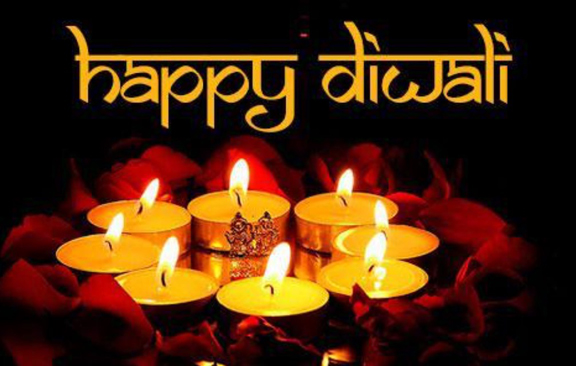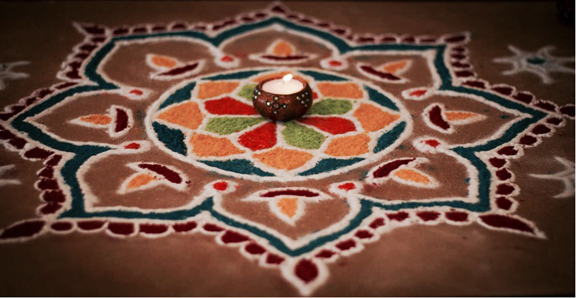
Over one billion Hindus, Sikhs, Jains and also some Buddhist sects all over the world celebrated the festival of Diwali, or Deepavali, on Nov. 7. The festival dates back to ancient times to herald the victory of good over evil, light over darkness, knowledge over ignorance and spreading the lessons of righteousness in personal and social behavior.
On Diwali the followers illuminate homes, offices, shops and temples and also arrange fireworks. The Festival of Lights, as it’s also called, is to celebrate the return of Lord Shri Rama to his kingdom Ayodhya after defeating and killing the demon King Ravana, freeing his own kidnapped wife Sita and restoring the pious younger brother of Ravana to the kingdom of Lanka.
The over 7,000-year-old ancient history of India is recreated every year about 20 days before Diwali – on Dussehra day – when in the final battle Ravana is defeated by Shri Rama and the vanquished demon’s effigy goes up in flames. After a few days, Rama, Sita, brother Lakshman with closest warrior-friend-devotee and confidant Hanuman and others return to Ayodhya where a grand celebration is arranged. That is Diwali.
Diwali essentially depicts the triumph of good over evil. The good things in life – the purity, love, respect, good governance, etc. – are represented by Rama and the bad things – autocracy, evil designs, treachery, tyranny, etc. – as depicted by Ravana. The long story of Rama (Ramleela) is also presented in plays that run for a couple of weeks in hundreds of cities and villages. They end with the return of Shri Rama and his meeting with his other brother Bharat, who was acting as Rama’s regent in his absence, and the fourth brother Shatrughna and the other members of his family and citizens.
Actually it’s a nearly month-long celebration starting from Navaratri-Dussehra and ending three days after the main festival of Diwali.
The story of Shri Rama, his exile, his living in the jungles for 14 years with his newly-married wife and his younger brother Lakshman, leading a life of an ordinary person, protecting the good people and punishing the bad ones establishing an exemplary good rule for the ultimate welfare of the people, is a household narrative in Hindu religion and culture. Ram Rajya (the rule of Rama) is supposed to be the ultimate peaceful, happy, strong and prosperous system in the nation.
Rama, the first of the four sons of King Dasharatha, was declared the crown prince and was destined to take over as the king. However, the second of Dasharatha’s three wives, Kaikai, had earlier helped the king in a war and got three boons (promises) from him for whatever she wished. Kaikai asked her husband to make her son Bharat the king and banish Rama for 14 years to a jungle.
The king died of this shock but Rama was determined to fulfill the promise of his father, left the kingdom and accepted exile for 14 years. His younger stepbrother Bharat refused the throne and, when Ram did not accept it, Bharat put Rama’s slippers on the throne and ruled the kingdom for 14 years to await his brother’s return.
The story of Rama and his family is a saga of self-sacrifice, purity, valor, protecting the good and punishing the bad, establishing a good government and leading a pious, dedicated and exemplary life in the service of the people they govern.
And so Diwali is celebrated for all the good things by extra lights (Diwali falls on a moonless night), prayers, fireworks, parties, lots of sweets, new dresses, new household utensils, decorations with colored powder, exchange of gifts and merry-making.
In America, Diwali is celebrated in various cities with sizable Hindu-Sikh-Jain population. The White House has also started celebrating Diwali in its own way. Last year a special postage stamp was issued to commemorate Diwali and President Trump participated in the celebrations. Former President Barack Obama had organized celebrations and First Lady Michelle also danced to the tunes of Indian music.
There are special prayers dedicated to Lakshmi, the goddess of wealth and prosperity. Following Diwali day there is a big feast and the next day is the festival of brothers-sisters. This is a five-day segment that starts with Dhanteras (buying utensils, gold, silver, etc.), then Chhoti Diwali (little Diwali), followed by the main Diwali, annakoot (big feast) and ending with Bhai-Dooj (brother-sister) ritual where sisters tie ornamental bracelets on the wrists of brothers and in turn get money/gifts and promise to be always there for them.
Diwali is an official holiday in India and several other countries such as Fiji, Mauritius, major parts of Malaysia, Nepal, Singapore, Myanmar, Sri Lanka, Suriname, Guyana, and Trinidad and Tobago.
Submitted by Yatindra BHATNAGAR

